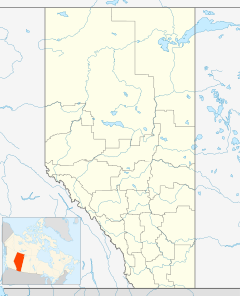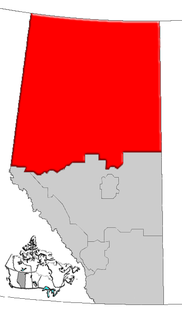Adams Landing is an unincorporated community in Alberta within the John D'Or Prairie 215 Indian reserve. It is located south of Highway 58 and the community of John D'Or Prairie on the northern bank of the Peace River, downstream from its confluence with the Wabasca River. Adams Landing is approximately 120 kilometers (75 mi) east of High Level and has an elevation is 255 meters (837 ft).

In law, an unincorporated area is a region of land that is not governed by a local municipal corporation; similarly an unincorporated community is a settlement that is not governed by its own local municipal corporation, but rather is administered as part of larger administrative divisions, such as a township, parish, borough, county, city, canton, state, province or country. Occasionally, municipalities dissolve or disincorporate, which may happen if they become fiscally insolvent, and services become the responsibility of a higher administration. Widespread unincorporated communities and areas are a distinguishing feature of the United States and Canada. In most other countries of the world, there are either no unincorporated areas at all, or these are very rare; typically remote, outlying, sparsely populated or uninhabited areas.

Alberta is a western province of Canada. With an estimated population of 4,067,175 as of 2016 census, it is Canada's fourth most populous province and the most populous of Canada's three prairie provinces. Its area is about 660,000 square kilometres (250,000 sq mi). Alberta and its neighbour Saskatchewan were districts of the Northwest Territories until they were established as provinces on September 1, 1905. The premier has been Rachel Notley since May 2015.

John D'Or Prairie 215(Jean D’Or in French) is an Indian reserve of the Little Red River Cree Nation in northern Alberta, Canada. It is located 117 km (73 mi) east of the Town of High Level on Highway 58 and is surrounded by Mackenzie County. It is at an elevation of 282 metres (925 ft).
C.P. Hotchkiss reported in his field notes, in 1920, that boats of all sizes stopped at Adams Landing. [1]







